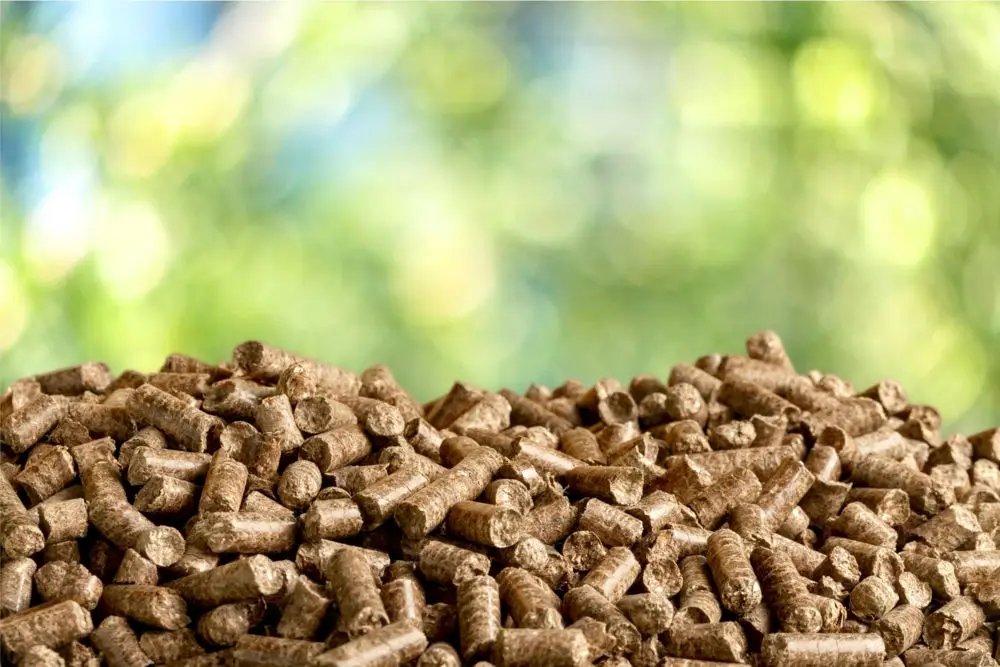EU Wood Pellets Consumption Expected to Expand in 2025
Editor WoodBusinessPortal.com team - research, 2025 - October, 14
Wood pellets remain a key segment in the EU biomass energy mix. After two years of decline in consumption (2023–2024), driven by mild winters, low fossil fuel prices, high pellet stocks, and industrial disruptions, the EU wood pellet market is forecast to recover in 2025. The rebound is being driven primarily by renewed demand in residential heating, regulatory frameworks favouring renewables, and growing import activity.
Drivers of Growth in 2025:
• Regulatory Support: EU directives, particularly the revised Renewable Energy Directive (RED II / RED II+), and national incentives, are pushing member states to shift away from fossil fuels for heating and power.
• Residential Heating Demand: Countries such as France, Germany, Austria, Poland, Spain, Czechia, Slovakia, and Croatia are expected to increase residential consumption significantly. The cold season, energy prices, and mandates are kindling interest in pellet boilers and stoves. Industrial demand will also recover, but more slowly.
• Imports & Trade Regulations: Rising demand will exceed domestic production in many regions. Imports are expected to increase, especially from the United States, Brazil, and selected Asian suppliers. However, upcoming regulations — notably the EU Deforestation-free Supply Chain Regulation (EUDR) (effective December 2025) — may add compliance costs and act as trade barrier for some exporters.
Consumption (EU-27) ~ 22.6 million metric tons in 2024; forecast ~ 23.45 million in 2025.
Represents modest recovery; still below the 2022 peak.
Production (EU-27) ~ 19.9 million metric tons in 2024; forecast ~ 20.5 million in 2025.
Growth concentrated in countries with strong wood supply and favourable policies.
Imports Forecast to recover in 2025 to ~ 4.68 million metric tons, though still below 2022 levels (~ 5.85 million).
Strong import dependence for industrial-grade pellets in some markets.
Leading Producers: Germany, France, Latvia, Poland among top EU producers; Baltic States remain important exporters.
Leading Consumers: Germany, France, Italy, Austria, Sweden.
Price Trends:
• Average import price in 2024 for wood pellets in the EU was about US$270/ton, down slightly from 2023.
• Prices vary significantly by country: for example, Denmark recorded higher import prices (circa US$362/ton), while Poland saw lower rates (~US$178/ton).
• Costs of raw materials and transport, forestry restrictions, and environmental regulations are expected to influence future price volatility. High demand may push up prices, especially in regions with limited domestic raw material supply.
Challenges & Constraints:
• Raw Material Availability: Forest management regulations, restrictions on harvesting (e.g. protected areas), and forest sustainability concerns may limit supply. Baltic States and Poland are noted in reports as facing material constraints.
• Regulatory Compliance Costs: The upcoming EUDR will require traceability (e.g. geolocation, plot identification), which adds cost for exporters and may delay shipments.
• Competition with Other Renewable Energies & Heating Sources: Natural gas, heat pumps, solar, and other bioenergy sources may limit growth, particularly where switching costs are high or infrastructure is lacking.
Predictions & Trends toward 2025 and Beyond:
• The EU`s wood pellet market is projected to grow steadily in coming years, with residential heating being the principal growth segment in 2025. Industrial demand (especially for power generation or large-scale CHP) will lag but should gradually improve.
• Export opportunities will benefit producers in Western Europe (deep-sea ports etc.), but also non-EU suppliers who can meet sustainability and regulatory requirements.
• Countries with stalled or stagnating demand (Italy, the Nordics in some cases) may require policy interventions or incentives to restart growth.
Implications for Industry Stakeholders. For producers, traders, and supply chain actors in the wood business, the forecast period offers opportunities but also demands careful navigation of regulation, supply constraints, and pricing pressures. Key areas to monitor:
• Investing in new or expanded production capacities in regions with sustainable wood supply and favourable logistics.
• Ensuring compliance with sustainability tracing and ESG / due diligence frameworks (especially in exports).
• Monitoring fuel and energy price trends (natural gas, heating oil) to anticipate substitution effects.
Role of WoodBusinessPortal.com. For professionals in the wood industry seeking to stay ahead of market shifts, WoodBusinessPortal.com can serve as a central resource. On our platform, you`ll find:
• Up-to-date market intelligence reports and forecasts, including pellet statistics, import/export data, price indices.
• Networking with suppliers, buyers, regulatory experts across the EU.
• Tools to evaluate compliance requirements (e.g. EUDR) and to identify sustainable raw material sources.
Conclusion. The EU wood pellet market is expected to expand in 2025, reversing declines experienced in 2023-2024. Key demand growth will come from residential heating bolstered by regulatory mandates and supportive policies. However, the expansion will be moderated by supply restrictions, regulatory compliance, and competition from alternative heating sources. Producers and traders who can align with sustainability demands, optimize logistics, and anticipate pricing dynamics are best poised to benefit.
Sources:
1. apps.fas.usda.gov
2. biomassmagazine.com
3. argusmedia.com
4. indexbox.io
